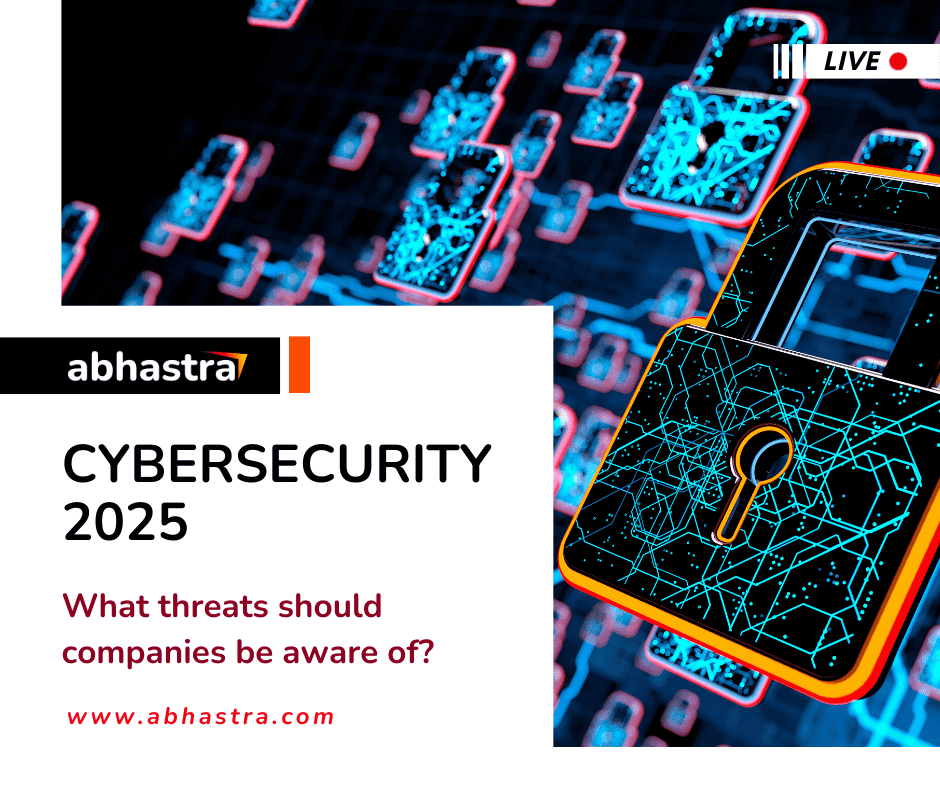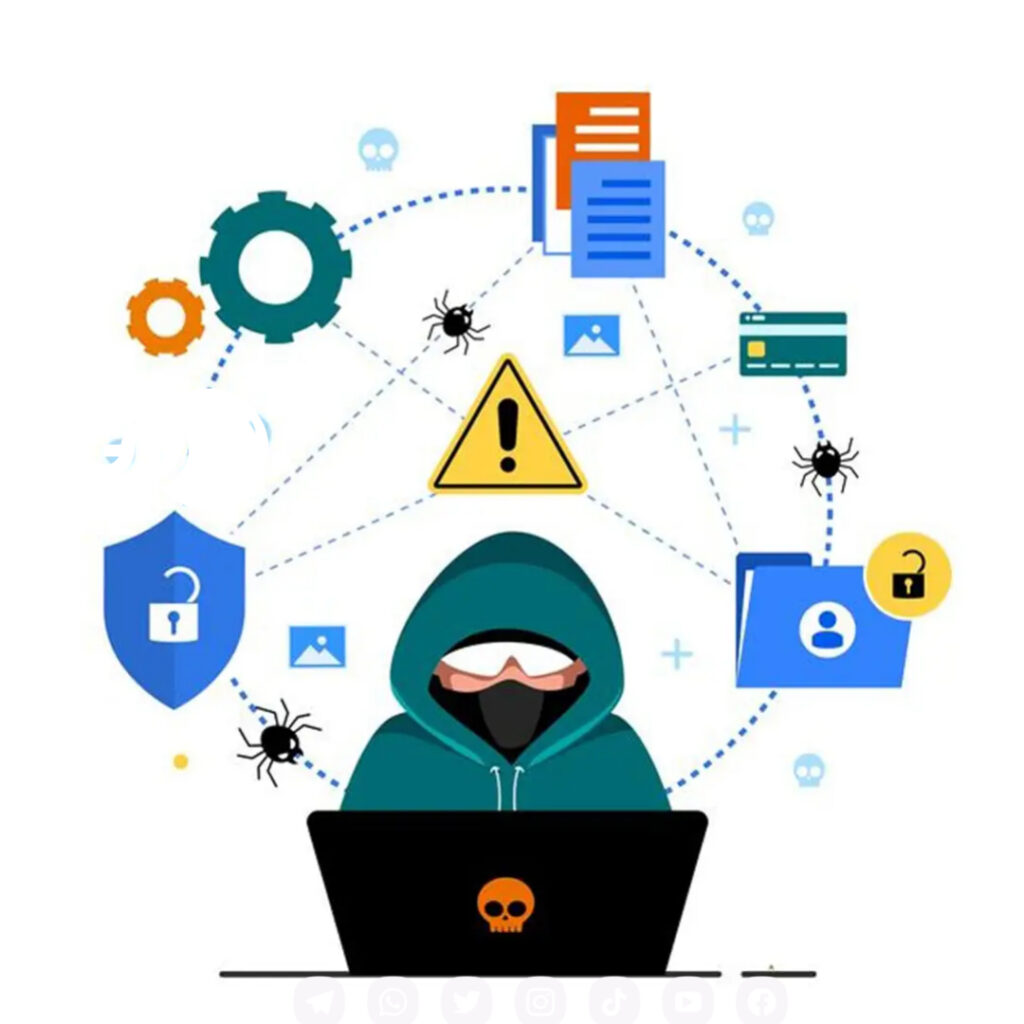Introduction
As businesses continue to embrace digital transformation, cybersecurity remains a top concern. The cyber threat landscape is evolving at an unprecedented pace, with new attack vectors, sophisticated hackers, and AI-driven cyber threats emerging. Companies that fail to stay ahead of these risks may face devastating financial, operational, and reputational damages.
In this blog, we will explore the major cybersecurity threats to watch out for in 2025 and provide essential strategies to strengthen your organization’s security posture.
1. AI-Powered Cyber Attacks
Artificial Intelligence (AI) is revolutionizing industries, but cybercriminals are also leveraging AI for malicious purposes. In 2025, expect to see AI-driven malware, automated phishing campaigns, and AI-powered deepfake attacks.
How to Stay Protected:
- Implement AI-based security solutions that detect anomalies in real-time.
- Train employees to recognize deepfake attacks and social engineering scams.
- Deploy behavioral analytics tools to identify suspicious user activity.
2. Ransomware Evolution: Double and Triple Extortion
Ransomware attacks have been increasing in complexity. Cybercriminals are no longer just encrypting data; they are threatening to leak sensitive information and targeting customers and partners for additional extortion.
How to Stay Protected:
- Regularly backup critical data and store it in an offline environment.
- Conduct ransomware awareness training for employees.
- Invest in advanced endpoint protection and threat intelligence solutions.
3. Supply Chain Attacks
As businesses rely more on third-party vendors, supply chain vulnerabilities have become a major security risk. Attackers are targeting suppliers to infiltrate entire networks, causing widespread damage.
How to Stay Protected:
- Conduct thorough security assessments of third-party vendors.
- Implement Zero Trust Architecture (ZTA) to limit unauthorized access.
- Continuously monitor third-party software and integrations.
4. Quantum Computing Threats
While quantum computing offers numerous advantages, it also poses a serious threat to traditional encryption methods. Cybercriminals and nation-state actors could potentially break existing encryption algorithms, leading to massive data breaches.
How to Stay Protected:
- Adopt post-quantum cryptography solutions.
- Upgrade existing encryption standards to quantum-resistant algorithms.
- Monitor advancements in quantum cybersecurity research.
5. Insider Threats: The Silent Danger
Whether intentional or unintentional, insider threats remain one of the biggest cybersecurity challenges. Employees or contractors with access to sensitive data can cause harm due to negligence, malicious intent, or financial gain.
How to Stay Protected:
- Implement strict access control policies (least privilege principle).
- Deploy User and Entity Behavior Analytics (UEBA) to detect anomalies.
- Conduct regular security awareness training and background checks.
6. Internet of Things (IoT) Vulnerabilities
With the rapid adoption of smart devices in businesses, IoT vulnerabilities have become a growing concern. Unsecured IoT devices can serve as entry points for cyberattacks, leading to data breaches and operational disruptions.
How to Stay Protected:
- Use strong authentication mechanisms for IoT devices.
- Regularly update firmware and apply security patches.
- Segment IoT networks to prevent lateral movement in case of a breach.
7. Cloud Security Risks
As more organizations migrate to the cloud, misconfigurations, data leaks, and insecure APIs are becoming primary security concerns.
How to Stay Protected:
- Use multi-factor authentication (MFA) for all cloud accounts.
- Conduct cloud security audits regularly.
- Implement end-to-end encryption for sensitive data stored in the cloud.
8. Social Engineering Attacks
Cybercriminals are increasingly using sophisticated social engineering tactics to manipulate employees into divulging confidential information.
How to Stay Protected:
- Educate employees on phishing, vishing, and smishing scams.
- Implement email filtering solutions to block malicious emails.
- Enforce strict verification protocols for sensitive transactions.
9. Regulatory Compliance Challenges
With evolving data privacy laws such as GDPR, CCPA, and India’s DPDP Act, companies need to ensure compliance to avoid hefty fines and reputational damage.
How to Stay Protected:
- Stay updated on global cybersecurity regulations.
- Implement automated compliance monitoring solutions.
- Regularly audit data privacy and security policies.
Final Analysis
The cybersecurity landscape in 2025 is expected to be more complex and challenging than ever before. Businesses must take a proactive approach to cybersecurity by leveraging advanced technologies, conducting employee training, and staying compliant with regulations.
Investing in cyber resilience is not just an IT concern—it is a business necessity. By implementing multi-layered security measures, continuously monitoring threats, and fostering a cyber-aware culture, organizations can significantly reduce their risk exposure in an increasingly digital world.
Are You Prepared for Cyber Threats in 2025?
Ensure your company is ready by conducting a comprehensive cybersecurity risk assessment today. Stay ahead of cybercriminals and safeguard your business from emerging threats.





